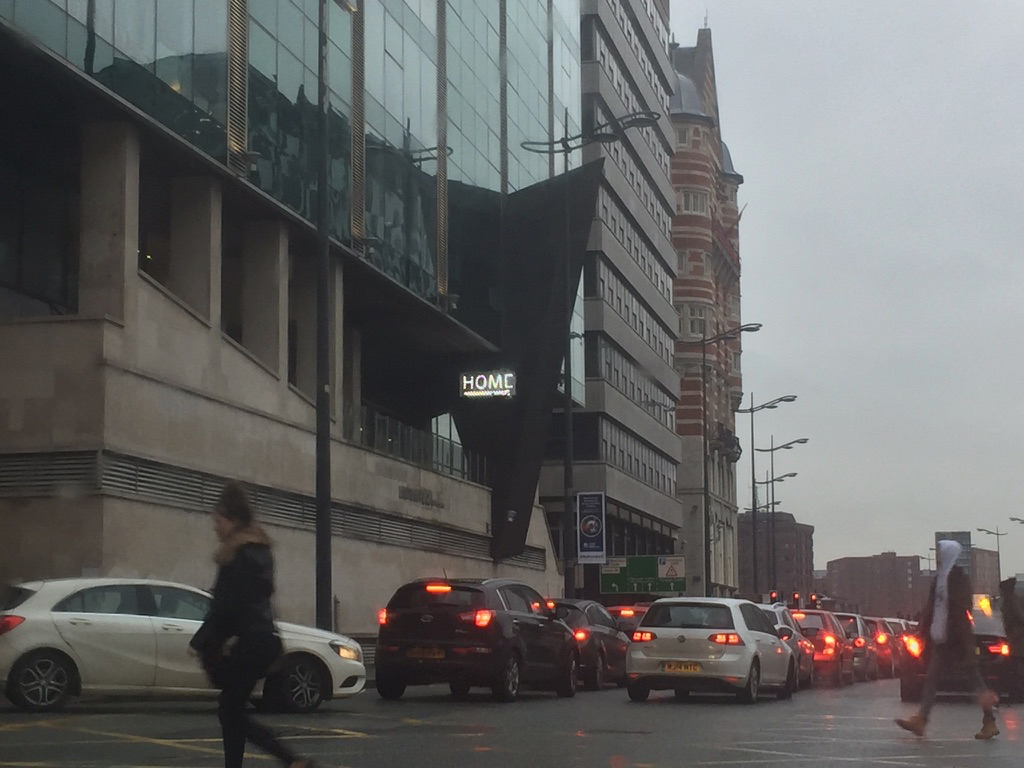When the city council announced plans to stage celebrations in 2018 to mark the 10th anniversary of Liverpool’s year as European Capital of Culture, nobody thought that, actually, what they meant was a re-enactment of the Big Dig.
But Son of Big Dig is on the way: one of the star “attractions” in proposals outlined today by Mayor Joe Anderson and his team.
They describe it as a radical £45m transport programme. To others it suggests a return of the long nightmare motorists and pedestrians faced when the city was on the world map.
They called it the City Centre Movement Strategy, but it was more like the City Centre Standstill Strategy was roads were narrowed, or reconfigured.
Then it settled down, with the widened Strand to Leeds Street inner ring road allowing, most of the time, easy passage.
That though will change with SoBD under plans for eight major projects that will transform how people move around Liverpool city centre, by foot, bike, car, coach and bus.
One plan will see busy Lime Street cut from four to two lanes on the side going out of town so that St George’s Plateau can be extended into an events space. The council people say it will be a world class “gateway experience”.
Another key element includes cutting lanes on the already congested Strand from eight to four, in order to accommodate a tree lined highway, with the simplification and removal of key junctions including the bus interchange at Mann Island to the Pier Head.

They say the changes, which involve altering traffic signal timings, will lead to a better traffic flow and improve the visitor experience for pedestrians walking from the city centre to the waterfront. The new look Strand would also include a cycle lane connecting the north and south of the city as well as the creation of more public space and street furniture.
The Liverpool City Centre Connectivity Scheme (LCCC), which goes before Liverpool City Council’s Cabinet on Friday, August 19 aims to boost transport links and further fuel Liverpool’s international appeal to investors, shoppers and tourists with its visitor economy, currently valued at £3.6bn/year, expected to grow by 25 percent over the next 10 years.
“A key aim of the far-reaching scheme is to achieve a major reduction in congestion by creating a new hub for buses to park and layover in, which will reduce bus traffic, and the repositioning of Queen Square bus station for all northbound routes and Paradise Street station for all southbound routes,” says the city council.
Yet there is nothing in the plans to resolve the so-called north-south divide which make it hard for people from the south end to get to the business district around Old Hall Street by foot, and a long trek for northenders heading for the Albert Dock, having the long march from Queen Square.
To add insult to injury passengers from the south end are now chucked off the buses half way along Hanover Street rather than Liverpool One bus station, which now doubles as Liverpool’s National Express coach station.
Those of us who lived through Big Dig One will be forced to relive the chaos caused by the plans of “traffic experts” who felt they knew better.
“Look at the traffic chaos they have in Manchester, Liverpool’s nothing like as bad,” said one person at the council. True, but let the Big Diggers have their way and we could easily catch up with congestion, Manc-style.
The council says there will be a public consultation, but the work done so far seems to suggest they have the diggers at the ready, and an army of temporary traffic lights eager to get going.
Councillor Malcolm Kennedy, Cabinet Member for Regeneration, said: ‘’Liverpool’s international appeal to visitors and investors has blossomed over the past decade and this has set many new challenges and new opportunities.
‘’This new transport scheme addresses many of our current and future needs to improve the city centre welcome and provide an experience befitting a world class city.
‘’With a growing residential population, a huge rise in visitors and major developments in the pipeline, how we navigate around the city centre needs a radical rethink in key locations and some major improvements.
‘’The creation of an extended St George’s Plateau, a new look Strand, a new bus hub, a new coach park, new dock bridges and upgrades to cycling and pedestrian routes from the Knowledge Quarter to the waterfront will open up a new world of possibilities for investors, event organisers and travel operators to further accelerate the future growth of the city centre and wider city region.
‘’This is a scheme that will make a huge difference to how everyone from residents, workers, shoppers, students and tourists can enjoy Liverpool.’’
To be completed before the end of 2019, the proposed eight LCCC projects are:
1. St George’s Plateau - New Event Space: To be created by reclaiming northbound lanes of Lime Street increasing current event capacity.
2. The Strand: New four lane highway, new north-south cycleway, enhanced animation of public space and road enhancements to improve pedestrian links from waterfront to the Commercial District and main retail area.
3. New City Bus Hub: To be established near Queen Square bus station accompanied by a new bus routing strategy that will cut congestion and pollution.
4. New City Coach Park: New off-street layover facility and rest area for drivers and reduce congestion in the city centre.
5. New Canning Dock Bridges: Four new bridges will be created to link Salthouse Quay (opposite Albert Dock) with Mann Island opening up land for future development
6. New Moorfields entrance: Upgrade to Moorfields station and surrounding public realm to enhance quality of arrival in the CommercialDistrict.
7. Brownlow Hill: Upgraded public realm and new cycle links from Lime Street station to the Knowledge Quarter, which is undergoing a £1bn renaissance.
8. Dale Street: One of Liverpool’s ‘Great Streets’, forming part of World Heritage site, will see public realm upgrades plus introduction of new east-west cycleway from Lime Street station to Waterfront.
The city council report is proposing that the eight projects are split into two contracts – the Strand being a standalone piece of work – and once approved by cabinet will go out to tender.
Once the tender exercise is complete, the cabinet will receive a new report with detailed costs, timescales and further recommendations.
The LCCC scheme will receive £38.4m from the Local Growth Fund with local match funding of £6.3m.
Consultation with stakeholders on the scheme has already begun and a series of public consultation events will begin in September.















